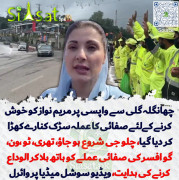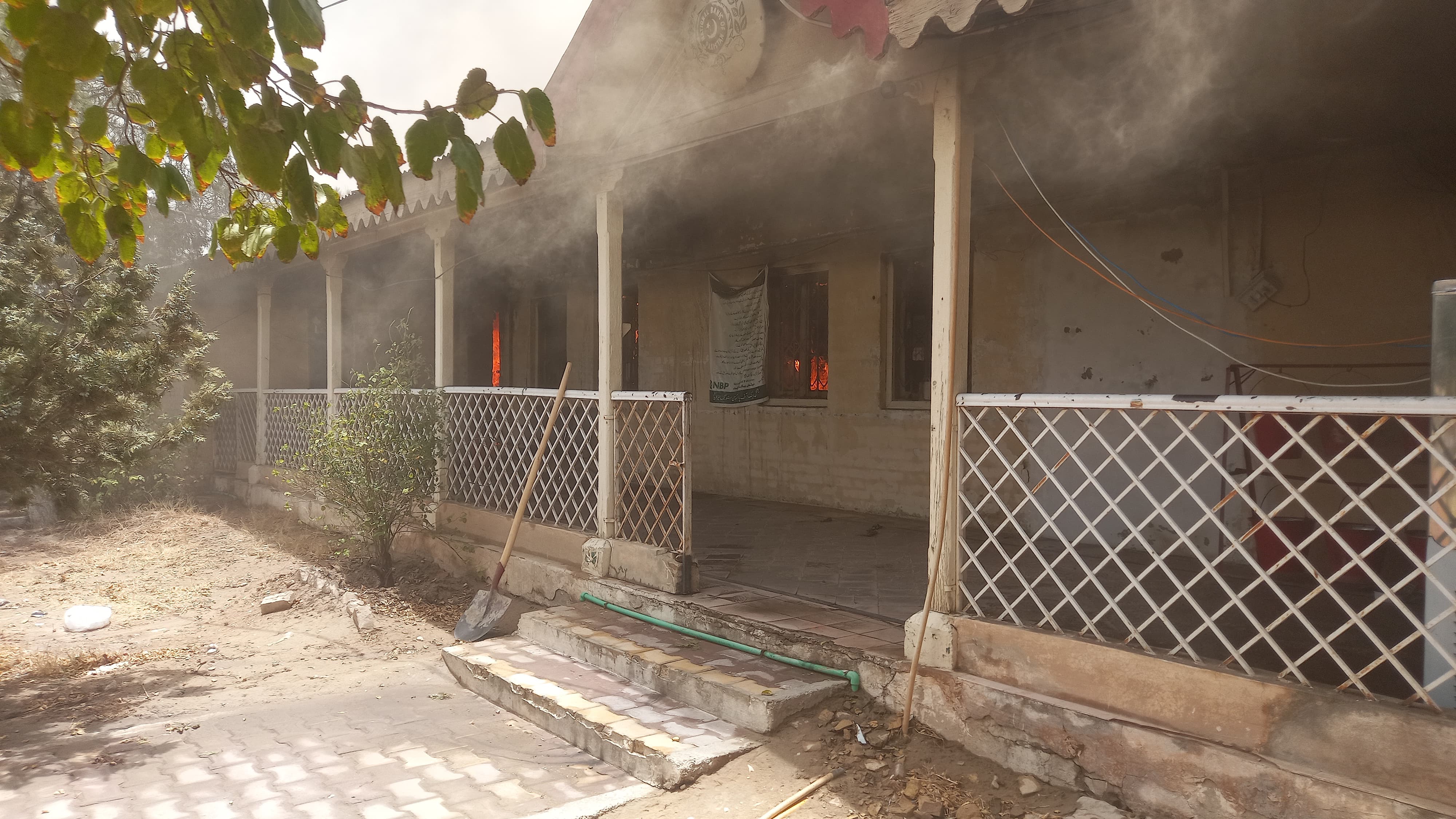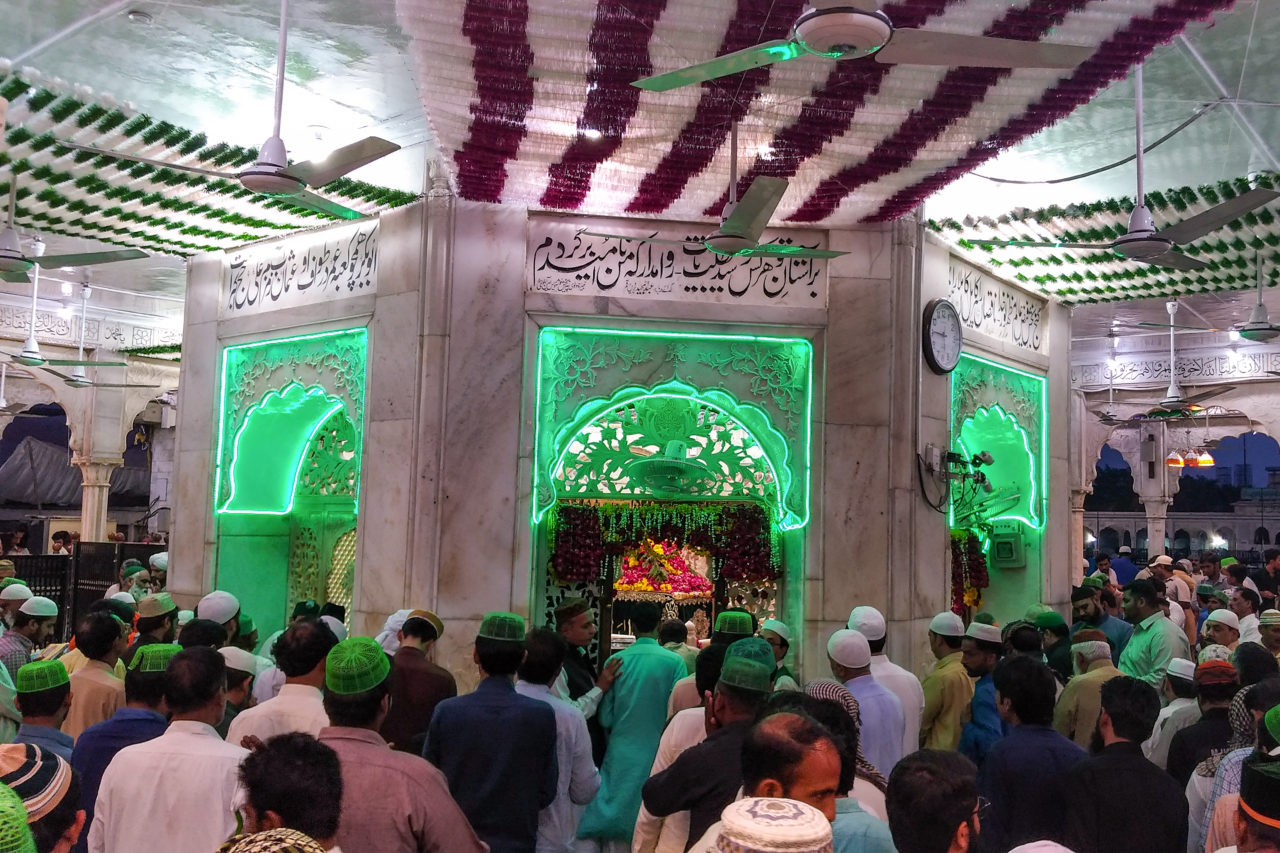Geek
Chief Minister (5k+ posts)
Five months ago, on January 4th, 2010 in the remote Hunza River Valley of northern Pakistan, a massive landslide buried the village of Attabad, destroying 26 homes, killing 20 people, and damming up the Hunza River. As the newly-formed lake grew, authorities rushed to evacuate and supply those affected in the landslide area and upstream. The lake is now over 300 feet deep and 16km (10 mi) long, submerging miles of highway, farms and homes. Earlier this week, the lake reached the top of the natural dam, and began to spill out - rapid erosion of the landslide debris has authorities worried about a potential breach, and locals have been evacuated as officials monitor the developing situation. Special thanks to the Pamir Times for sharing their photos and coverage of this event.

This photograph was taken while a secondary landslide was taking place near Attabad village in northern Pakistan on January 22, 2010, after the original massive landslide of January 4th blocked most of the Hunza Valley and dammed the Hunza River

Residents from surrounding area visit the scene of the massive landslide in the Hunza River Valley in northern Pakistan on January 5, 2010.

A view of the newly-forming lake formed due to blockage of the Hunza River, seen three days after the landslide, on January 7, 2010

Land cracks visible in the land near what remains of the village of Attabad on February 1, 2010. FOCUS geologists warned that the cracked portions might fall at any time

Another view of the growing lake formed behind the landslide, seen from the ruins of Attabad village on February 1, 2010.

Local volunteers conducting search for bodies in rubble near the village of Attabad on January 6, 2010.

A funeral service is held for some of the victims of the Hunza Valley landslide on January 6, 2010

Men climb across landslide debris in the Hunza River Valley on January 7, 2010. The growing lake is visible in the background.

With the only highway wiped out by the landslide, Gojal Valley locals turn to airlifts to help them evacuate and get access to goods and services. Photo taken on January 7, 2010

Heavy machinery is employed to lift and carry a wooden boat up the side of the landslide debris to be deposited in the lake to aid evacuation and supply missions on April 6, 2010

In this image taken on April 30, 2010, local people use a boat to ferry their vehicles in a lake caused by landslide which cuts off part of the Karakoram highway to China, in the Hunza district of northern Pakistan

In this image taken on Thursday March 11, 2010, Pakistani loaders carrying goods imported from neighboring China which are ferried through a lake due to blockade of the Karakoram Highway, in Attabad, northern Pakistan. A massive landslide early this year formed a natural dam in the Hunza River created a lake that is consuming upstream as it expands. If dam breaks, a flash flood could threaten downstream villages

An aerial view, taken from military helicopter, of a natural dam caused by a landslide in Attabad village, Hunza district, northern Pakistan, May 21, 2010. Thousands have been evacuated from their homes this week in north Pakistan amid fears a lake, formed after a landslide blocked the Hunza River on January 4, could soon burst, triggering massive flooding and severing an important trade link with China.

An aerial view, taken from military helicopter, of a natural dam caused by a landslide in Attabad village, Hunza district, northern Pakistan, May 21, 2010

An aerial view shows a lake overtaking a village in the Hunza district of northern Pakistan on Saturday, May 29, 2010

Villagers, who lived near a lake created after a landslide in Hunza district, collect belongings from their home at Sheeshghat village in Hunza district of northern Pakistan May 24, 2010.

Women, who lived near a lake created after a landslide in Hunza district, cut barley in a field in Seeshghat village in Hunza district of northern Pakistan May 24, 2010

As water rises, locals use a makeshift pedestrian bridge to help them supply and evacuate in the Hunza River Valley in northern Pakistan. The pillars are from an under-construction "friendship bridge" for the now-partly-submerged Karakoram Highway. Photo taken on March 17th, 2010.

This image, acquired by the Advanced Land Imager (ALI) aboard NASA's Earth Observing-1 (EO-1) satellite on March 16th, 2010 shows the blocked Hunza River and the growing lake, then 11 km (7 mi) long, inundating several villages and 5 km (3 mi) of the Karakoram Highway. Landslide blockage is at lower right

Pillars of the under-construction "friendship bridge" for the Karakoram Highway, now flooded - seen on May 2nd, 2010, only two weeks after the same scene was photographed from a different angle in image #18.

This photograph was taken while a secondary landslide was taking place near Attabad village in northern Pakistan on January 22, 2010, after the original massive landslide of January 4th blocked most of the Hunza Valley and dammed the Hunza River

Residents from surrounding area visit the scene of the massive landslide in the Hunza River Valley in northern Pakistan on January 5, 2010.

A view of the newly-forming lake formed due to blockage of the Hunza River, seen three days after the landslide, on January 7, 2010

Land cracks visible in the land near what remains of the village of Attabad on February 1, 2010. FOCUS geologists warned that the cracked portions might fall at any time

Another view of the growing lake formed behind the landslide, seen from the ruins of Attabad village on February 1, 2010.

Local volunteers conducting search for bodies in rubble near the village of Attabad on January 6, 2010.

A funeral service is held for some of the victims of the Hunza Valley landslide on January 6, 2010

Men climb across landslide debris in the Hunza River Valley on January 7, 2010. The growing lake is visible in the background.

With the only highway wiped out by the landslide, Gojal Valley locals turn to airlifts to help them evacuate and get access to goods and services. Photo taken on January 7, 2010

Heavy machinery is employed to lift and carry a wooden boat up the side of the landslide debris to be deposited in the lake to aid evacuation and supply missions on April 6, 2010

In this image taken on April 30, 2010, local people use a boat to ferry their vehicles in a lake caused by landslide which cuts off part of the Karakoram highway to China, in the Hunza district of northern Pakistan

In this image taken on Thursday March 11, 2010, Pakistani loaders carrying goods imported from neighboring China which are ferried through a lake due to blockade of the Karakoram Highway, in Attabad, northern Pakistan. A massive landslide early this year formed a natural dam in the Hunza River created a lake that is consuming upstream as it expands. If dam breaks, a flash flood could threaten downstream villages

An aerial view, taken from military helicopter, of a natural dam caused by a landslide in Attabad village, Hunza district, northern Pakistan, May 21, 2010. Thousands have been evacuated from their homes this week in north Pakistan amid fears a lake, formed after a landslide blocked the Hunza River on January 4, could soon burst, triggering massive flooding and severing an important trade link with China.

An aerial view, taken from military helicopter, of a natural dam caused by a landslide in Attabad village, Hunza district, northern Pakistan, May 21, 2010

An aerial view shows a lake overtaking a village in the Hunza district of northern Pakistan on Saturday, May 29, 2010

Villagers, who lived near a lake created after a landslide in Hunza district, collect belongings from their home at Sheeshghat village in Hunza district of northern Pakistan May 24, 2010.

Women, who lived near a lake created after a landslide in Hunza district, cut barley in a field in Seeshghat village in Hunza district of northern Pakistan May 24, 2010

As water rises, locals use a makeshift pedestrian bridge to help them supply and evacuate in the Hunza River Valley in northern Pakistan. The pillars are from an under-construction "friendship bridge" for the now-partly-submerged Karakoram Highway. Photo taken on March 17th, 2010.

This image, acquired by the Advanced Land Imager (ALI) aboard NASA's Earth Observing-1 (EO-1) satellite on March 16th, 2010 shows the blocked Hunza River and the growing lake, then 11 km (7 mi) long, inundating several villages and 5 km (3 mi) of the Karakoram Highway. Landslide blockage is at lower right

Pillars of the under-construction "friendship bridge" for the Karakoram Highway, now flooded - seen on May 2nd, 2010, only two weeks after the same scene was photographed from a different angle in image #18.


















































































